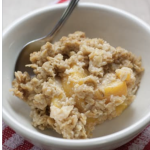
Beyond the Bedside: Beat the Heat
By Dr. Eric Sensenbrenner
Summer is here, which means longer days and more fun in the sun. For those who have lived in the southeast for at least one summer, you know these summer days are hot and humid. It is important to respect the outdoor elements and know how to be prepared for the heat to avoid dangerous consequences. Heat exhaustion and heat stroke are common in the summer and lead to thousands of emergency room visits annually. Thankfully, they can be easily prevented.
Heat exhaustion occurs when someone is exposed to hot environmental conditions too long. Often one suffering from heat exhaustion will have increased thirst, heavy sweating, nausea, and weakness. They may have a headache or feel dizzy. It is important to recognize when someone is having heat exhaustion to act fast in administering treatment. If untreated, heat exhaustion can lead to heat stroke.
Heat stroke is more severe, occurring when the body loses control of regulating temperature and reaches dangerously high temperature levels. The body reaches temperatures above 104 F, leading to organ damage. Features can include sudden confusion, seizures, loss of consciousness, nausea/vomiting, and muscle weakness. It is a medical emergency, and you should call 911 if you are concerned somebody is having heat stroke. If untreated, heat stroke can cause death or permanent disability.
The goal of treatment is to lower the core body temperature and re-hydrate. Move the person to a cool/shaded area, remove unneeded layers of clothing and provide cold water to drink. Use ice packs placed around the neck, in the armpits, and groin to help cool the person. Applying water to the skin and using fans can help with cooling through evaporation.
Take steps to prevent heat exhaustion and heat stroke by staying well hydrated and avoiding the hottest times of the day. Plan ahead if you know you will be outdoors for an event or activity. Start hydrating days before the event and have extra water available during your time outside. Try to do most outdoor activities in the early morning or late afternoon to avoid the hottest parts of the day. Escape the heat by staying in the shade or being able to cool off in the water.


